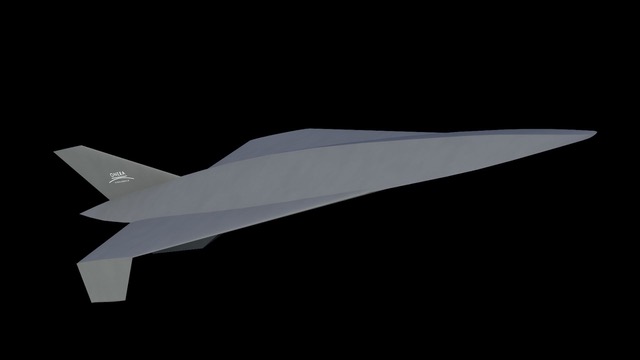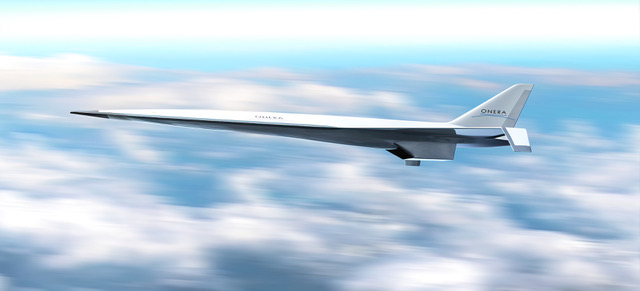The Espadon Hypersonic Fighter Jet Project
By Pierre Tran
Paris – Onera, a state-backed research office, will put on display at the upcoming Paris air show its work on a future hypersonic fighter jet, dubbed Espadon, capable of flying at Mach 5, René Mathurin, director for defense studies, said June 14.
Espadon, alongside the separate Superman project, are in-house aeronautic studies on “combat aviation,” he told a press conference on Onera’s roadmap on science and technology in civil and military projects.
A model of the Espadon, or Swordfish, has undergone wind tunnel tests, he said, as part of upstream technology study for a fighter flying Mach 5 in 2045-2050. This fighter would follow on from the planned Future Combat Air System.

The European FCAS is due to enter service in 2040, with a new generation fighter (NGF), remote carrier drones, and combat cloud communications network at the heart of the project. France, Germany and Spain back FCAS, with Belgium keen to enter the partnership, in a bid to support its aerospace industry.
Meanwhile, a flight test for a French full-scale prototype of a hypersonic cruise missile has yet to be made, an official said.
Onera and European missile maker MBDA have worked on a hypersonic missile under the Lea project, and have been waiting to fire the weapon at a U.S. base on the East Coast, helped by the U.S. air force and NASA.
The Espadon studies consider tomorrow’s technology, such as electromagnetic signature and optics, and explore fighter missions in 2050, Mathurin said. The research office draws on 40 years work on hypersonic technology, which includes “oceanic and airborne” deterrence.
The French forces deploy nuclear ballistic missile submarines and airborne nuclear-armed missiles on fighters flying from airbases and an aircraft carrier.
Analysis of what the threat will be in 15-20 years’ time will be part of the studies, which will be multi-disciplinary.
Onera draws on its experience in air-breathing hypersonic flight, aerodynamics, propulsion, materials, heat management, and stealth, the research office said on its Espadon project.
“It also provides a case study to imagine use contexts, missions, and potential capabilities of such a system and thus define the potential threat to our current and future weapons systems,” the office said.
The work on its Superman project studies a fighter flying at Mach 2.5, and will feed into technology for a manned new generation fighter in FCAS, Mathurin said.

Onera expects to sign an agreement with the Direction Générale de l’Armement procurement office by the end of the year for work on the FCAS project. That agreement will set the DGA’s priorities on work on the seven FCAS technology pillars, and allows the research office to assign work to its engineers.
There were no details immediately available on the budget for the planned agreement with the DGA.
Onera has worked on FCAS following a letter of intent signed May 5 2021 with the DGA. The new agreement with the DGA will follow on from the December 2022 signing of the phase 1B industrial contract, worth €3.2 billion ($3.5 billion) for a technology demonstrator for the future air system.
Onera has worked with Dassault Aviation on studies for the new fighter project over the last couple of years. The latter is prime contractor on a demonstrator for the new fighter, due to fly 2028-2029. Airbus Defence & Space is the business partner with Dassault.
There has been completion of an initial phase 1A study on FCAS technology development, worth €155 million. The seven technology pillars are: the new fighter, remote carrier drones, engines, combat cloud, sensors, simulation, and stealth.
The Paris air show will run June 19 to 25, and the French president, Emmanuel Macron, is due to visit the high-profile exhibition on the opening day.

